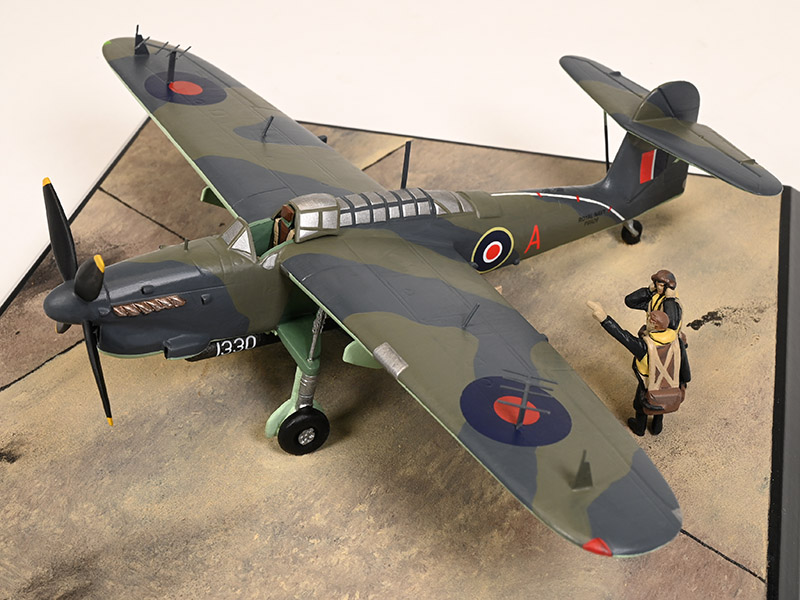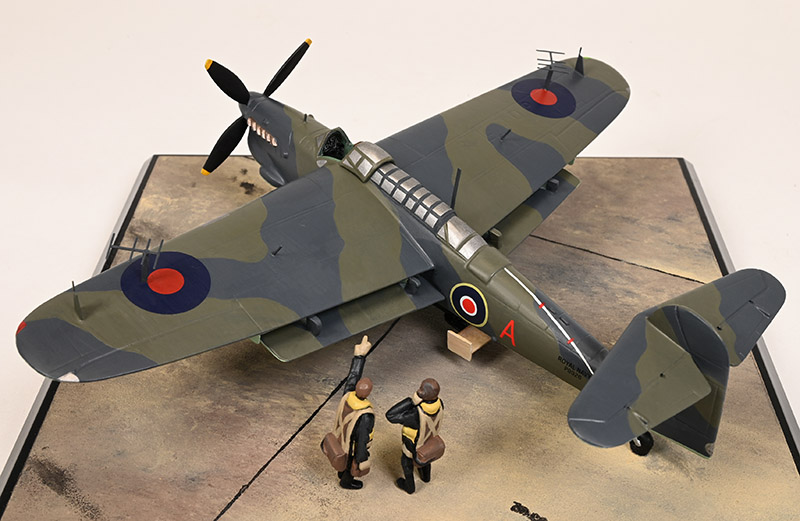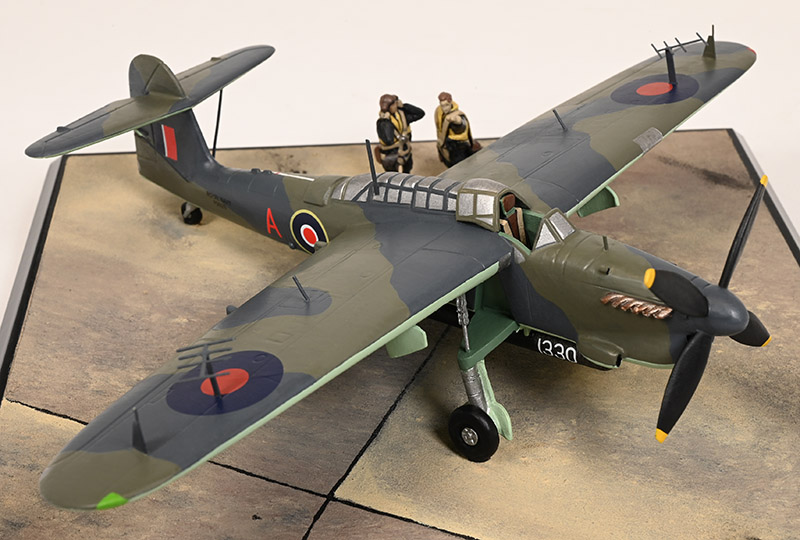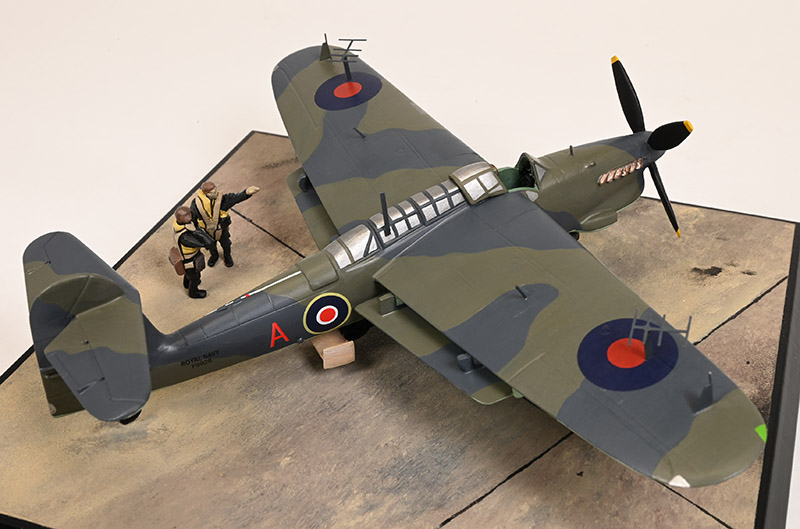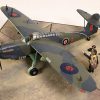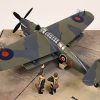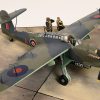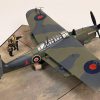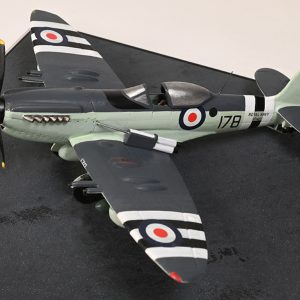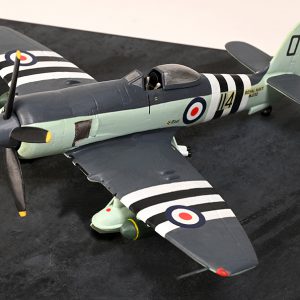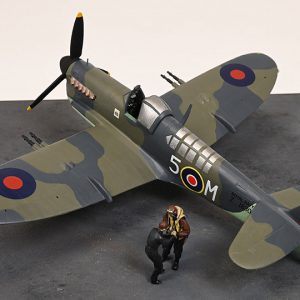Fairey Barracuda MK II
P9926 “A”
Royal Naval Air Station Lee-on-Solent (HMS Daedalus) 1943 – 1944
The specification that led to the Barracuda was one of the first to be issued following the transfer of the Fleet Air Arm to full Royal Navy control. Having ordered the Swordfish, and its successor the Albacore to a Torpedo-Spotter-Reconnaissance requirement, the Admiralty required a Torpedo-Bomber-Reconnaissance monoplane. Following negotiations with the Air Ministry Specification S.24/37 was issued to industry at the beginning of 1938. Eight designs were submitted by seven companies. Those from Fairey Aviation and Supermarine were approved for prototype construction, though the latter’s Type 322, which had the novelty of a variable incidence wing, did not progress beyond the prototype stage.
The Fairey Type 100 was designed around the 24-cylinder Rolls-Royce Boreas, but this engine’s development was terminated and it was replaced by a Merlin 30 offering 1,300 hp. With this power plant, prototype P1767 made its first flight on 7 December 1940. Its appearance differed from that of the very recognisable production Barracudas in having the tailplane at the junction of the fin and the fuselage; in development this was raised about three-quarters of the way up the fin because of turbulence caused by the large Fairey-Youngman flaps, these being virtually separate aerofoils set below and behind the trailing edge inboard of the ailerons. They played a part in optimising the type’s dive-bombing performance, a role in which it served increasingly through its wartime career. Another visual feature was its wide-track undercarriage that retracted in to both fuselage and wing and which looked as though it owed something to civil engineering practice. The main production Barracuda was the Mk.II with the Merlin 32 of 1,640 hp. Over 1,600 were built; as well as Fairey, Blackburn, Boulton Paul and Westland produced this mark. The Mk.III was intended for anti-submarine reconnaissance and carried ASV radar in a radome under the rear fuselage, with over 800 coming from Fairey and Boulton Paul. The final production model, the Mk.V, had a Griffon engine and a larger vertical tail.
The Barracuda II entered front line service with 827 Naval Air Squadron in January 1943, replacing its Albacores, and by the end of that year ten further squadrons had been commissioned, flying from both fleet and light carriers organised as TBR (Torpedo Bomber Reconnaissance) Wings. Most of their activity in Europe was in Norwegian waters, the best known being a series of operations against the German battleship Tirpitz. Moored in a Norwegian fjord, and even when under repair in the spring of 1944 after attacks by midget submarines, the ship presented a constant potential threat to the Royal Navy’s Home Fleet and to the shipping it protected. Three series of attacks were carried out by the Fleet Air Arm; Operation Tungsten was mounted in April, Mascot in July and Goodwood in August.
The Royal Naval Air Station, Lee-on-Solent (HMS Daedalus) was one of the primary shore airfields of the Fleet Air Arm. First established as a seaplane base in 1917, it later became the main training establishment and administrative centre of the Fleet Air Arm. P9926 A was operated from the base during 1943 – 44. The aircraft was capable of carrying an 18-inch aerial torpedo. The British generally employed the Mk XV and Mk XVII sub-types of this weapon for aerial launch with 545 lb (247 kg) and 600 lb (270 kg) Torpex warheads respectively. Both torpedoes employed burner cycle propulsion and were capable of 40 knots (74 km/h; 46 mph) for 2,500 yd (2,300 m). The wooden tail plane steadied the weapon before it struck the water and then broke off leaving the torpedo to continue on target. This invention is credited to the Japanese Imperial Navy. In 1931, they developed the Type 91 torpedo, intended for a torpedo bomber to drop from a height of 330 feet (100 m) and a speed of 100 knots (190 km/h). In 1936, the Type 91 was given wooden attachments to the tail, nicknamed the “Kyoban”, to increase its aerodynamic qualities. These attachments were shed upon hitting the water. The Kyoban concept was in general use with all combatant nations during World War 2.
P9926 A’s ASV radar “Yagi” antenna are visible above the wings. The antennae was invented in 1926 by Shintaro Uda and Hidetsugu Yagi of Tohoku Imperial University, Japan. Hence the name. Despite its being invented in Japan, many Japanese radar engineers were unaware of the design until very late in the war, partly due to rivalry between the Japanese Imperial Army and Navy. The Japanese military authorities first became aware of this technology after the Battle of Singapore when they captured the notes of a British radar technician that mentioned “yagi antenna”. A stark example of the Japanese failure to properly utilise available technology in furthering their war aims.
The Barracuda continued its operational career in the Pacific, and continued in service with the Fleet Air Arm, generally in second-line roles, until 1953. In 1948 ten were supplied to France and continued in use until 1956, reputedly on clandestine reconnaissance and intelligence-gathering missions. No complete Barracuda survives. Since the early 1970s the Fleet Air Arm Museum has been collecting Barracuda components from a wide variety of sources throughout the British Isles, with the long term aim of rebuilding a Barracuda. The project is currently ongoing. Nose, centre section, tail and wing components from Barracuda DP872 were the first to be collected and have since formed the basis of the rebuild.


